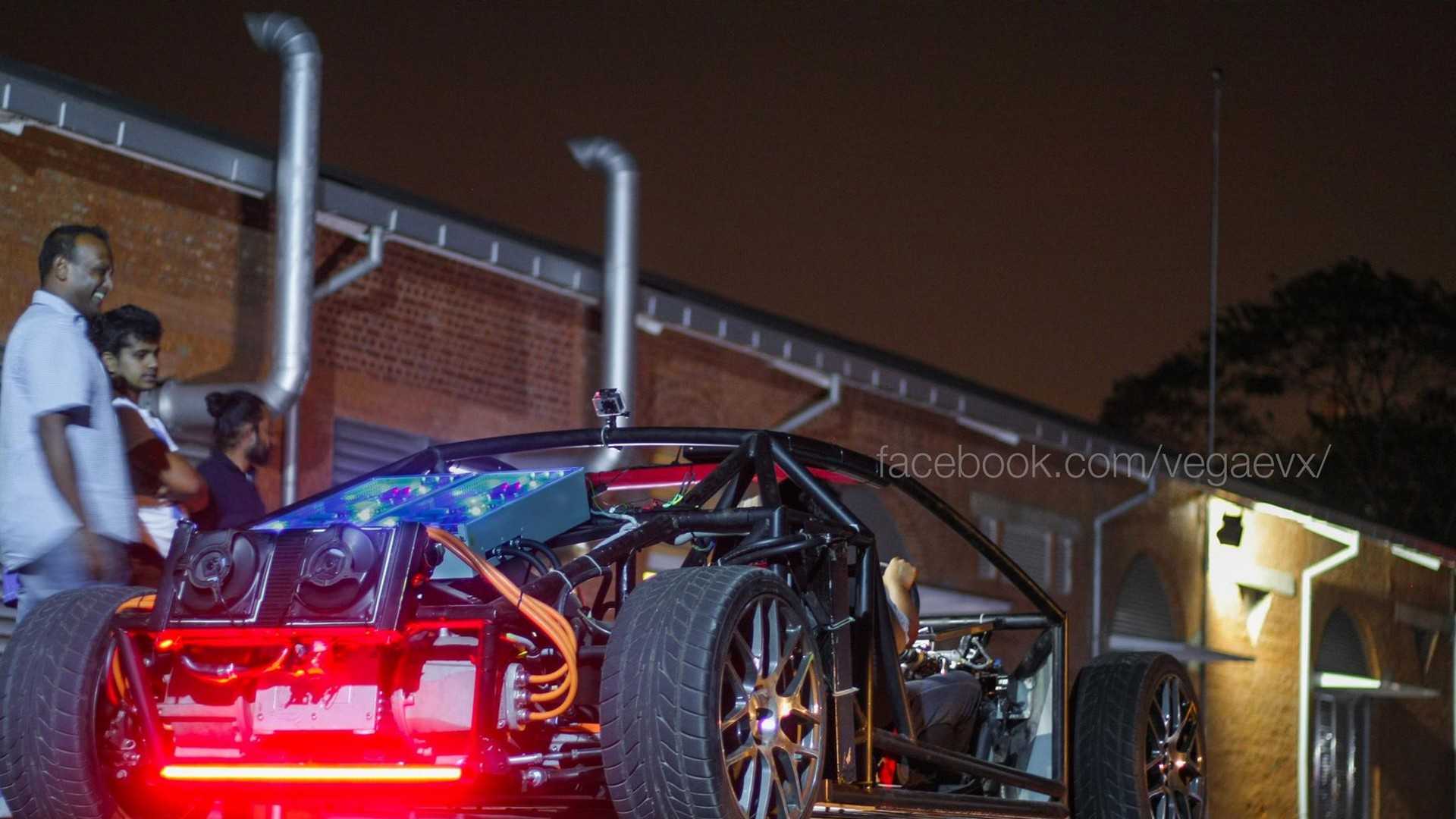Sri Lanka is probably proud of Vega’s team of engineers. They will present in March, at one of the leading world stages, the country’s first super EV. The EVX will be the company’s main attraction at the 2020 Geneva Motor Show, and we already wrote about it here. The deal is that this super EV will be stronger than we previously thought.
Vega’s website stated at the time that the EVX would have 300 kW (402 hp) and two motors – one in each axle. We did not know the torque nor any dimension. The Vega team got in touch with us and spilled all the beans.
The production version of the Sri Lankan will be 4.53 m (178.4 in) long, 1.99 m wide, 1.22 m tall, and has a 2.85 m wheelbase. It has a luggage capacity of 260 l (9.2 ft³) and weighs 2,090 kg, 480 kg of which are due to the battery. The battery pack is composed of 12 modules, each of them with 50 lithium ferrous phosphate (LiFePO4) pouch batteries. Currently, it delivers 540V and 40 kWh, enough for 250 km (155 mi) of range. Fast charging is done via ChadeMo and CCS at 120 kW.

Beshan Kulapala, Vega’s director, tells us more about it.
“We started to develop the liquid-cooled LiFePO4 battery pack in 2014. At the time, we believed that we could get the performance we needed from a 400V system, even though our motor is rated at much higher. After three years into it, we saw how the market was moving to higher voltages and higher performance. So we began to make some modifications to stay as close to the market trend as possible. We wanted to get to under 3 s for the 0 to 100 km/h time. Our new cylindrical battery pack that we will soon test will get us to even higher voltages.
At the moment, we are spending a lot of effort on technologies for this battery pack, with tab liquid cooling, advance fusing, and high energy density packing technologies. We hope that our real USP – Unique Selling Proposition – will stand out with the cylindrical cell packs that we are developing.”

The 300 kW we mentioned before are for each of the two motors, which leads us to 600 kW or, as the company prefers to describe, 804 hp. Torque will reach 760 Nm (560.6 lb-ft). But there is potential for more, according to Kulapala.
“Each motor has 420 Nm of peak torque and 350 kW of peak power per motor.”

That will allow the supercar to reach a top speed of 240 km/h and a 0 to 100 km/h of 3.1 s, as the video below shows.
We wondered why the car is under development since 2015 and Kulapala gave us a touching explanation.
“Sri Lanka has never produced its own vehicle before, even though vehicle assembly was tried a few times in the past. We are an agricultural nation, and we don’t have much to show in terms of technology in recent history. More than 2,500 years ago, we built Sigiriya, a technological marvel at the time, now a world heritage site. We don’t have any kind of advanced tooling, nor do we have experts locally to take projects forward quickly.
With a pinch of an investment compared with other EV teams in the world, we embarked on building the first Sri Lankan EV supercar. An audacious goal: We were aiming for the moon, hoping to land on the coconut tree at most!
Unlike some other EV supercars, we decided to build all the electronics ourselves in the first go. The liquid motor controller, EVCU, BMS, DC/DC, body control, thermal control, etc. are all built by us from the ground up. That took a long time to get to a drivable state.
The liquid-cooled battery pack also was a big challenge, which we designed and built by ourselves. On the chassis and body front, the entire 1:1 plug was hand-built with no advanced CNC tooling, apart from a 3D laser scanner borrowed from a local university with much difficultly. All this was done with a team of about eight engineers for three years, and about 20 for the following 3.”
If you have the chance to see these guys at the 2020 Geneva Motor Show, pay them more than a visit: pay them respect. They more than deserve it. If you happen to like the car, it will cost $250,000. You’ll have to pay that too…

